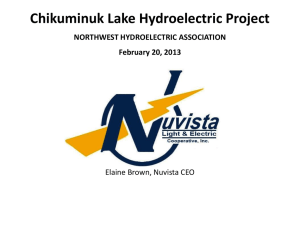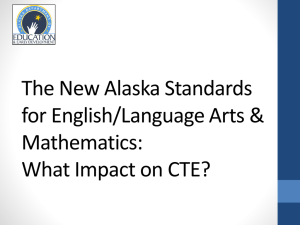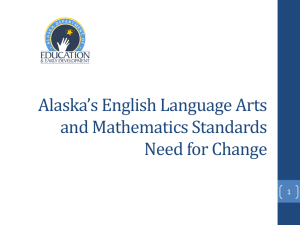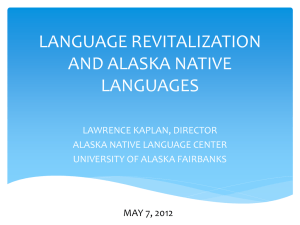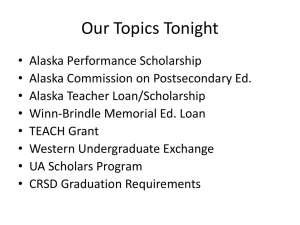Alaska Natives - Institute of the North
advertisement
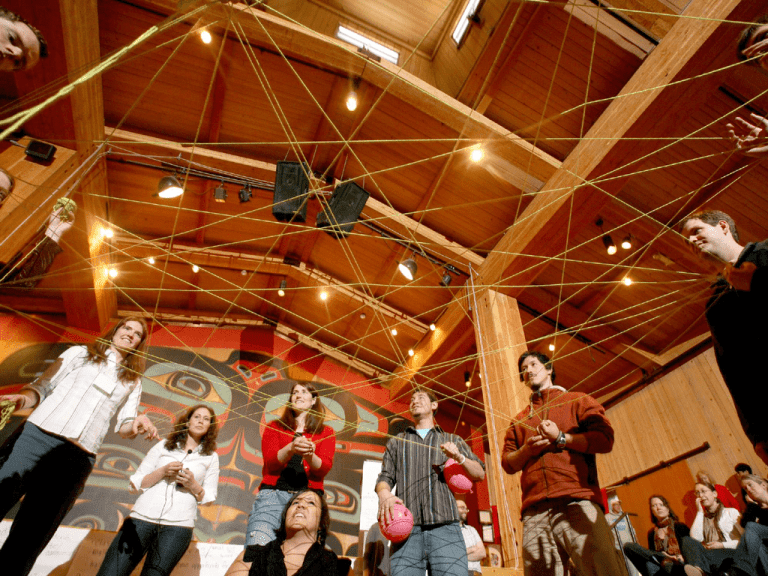
We the People of Alaska We the People of Alaska Understanding the Obligations of Citizenship A unique state with unique responsibilities Place-Based Learning Connecting young citizens to where they live Civic Engagement Combining education with action INSTITUTE OF THE NORTH • WE THE PEOPLE OF ALASKA Goals • Stronger civic and political engagement • Provide a foundation from which students can gain a greater understanding of the current issues facing our state • Students inspired by their own learning and investigation • Develop teamwork skills through problem-solving • Demonstrate critical thinking skills by thoroughly understanding a diverse array of topics INSTITUTE OF THE NORTH • WE THE PEOPLE OF ALASKA Leadership Ladder Established Leaders Emerging Leaders (college – 40 yrs old) Youth (high school/college) • • • • AASG COYA Boys/Girls State Spirit of Youth • Alumni Association • Student Government • Young professional and emerging leaders programs • • • • • Commonwealth North RDC Chamber Rotary Elks INSTITUTE OF THE NORTH • WE THE PEOPLE OF ALASKA Building Blocks CITIZENSHIP NATURAL RESOURCES ALASKA NATIVES GOVERNING ENTITIES ECONOMY ALASKA MODEL INSTITUTE OF THE NORTH • WE THE PEOPLE OF ALASKA Building Blocks Citizenship CITIZENSHIP NATURAL RESOURCES ALASKA NATIVES GOVERNING ENTITIES ECONOMY ALASKA MODEL • What motivated Alaska to seek Statehood? • Why did Alaska hold a Constitutional Convention and how did the delegates create the State Constitution? • Section 1.1 of the Alaska State Constitution asserts, “all persons have corresponding obligations to the people and to the State.” What are these obligations? INSTITUTE OF THE NORTH • WE THE PEOPLE OF ALASKA Building Blocks Natural Resources CITIZENSHIP NATURAL RESOURCES • The passage of the Alaska National Interest Lands Conservation Act (ANILCA) came after a large national debate over the importance of development versus conservation. How should a balance between the two be determined? ALASKA NATIVES GOVERNING ENTITIES • What role did land ownership play in constructing the Trans-Alaska Pipeline System? • Is the Magnuson Fishery Conservation and Management Act (MFCMA) effective at combating overfishing? Why or why not? ECONOMY ALASKA MODEL INSTITUTE OF THE NORTH • WE THE PEOPLE OF ALASKA Sample questions and responses Why did Alaska hold a Constitutional Convention and how did the delegates create the State Constitution? How does Alaska’s geography impact its economy? Explain the significance of natural resources and the revenue they generate. An example response could describe the motivations for statehood and why leaders thought creating a Constitution could spur on the process. It should include a description of the format of the Convention and mention significant contributions from specific individuals. It would be useful to explain the rules for holding subsequent Constitutional Conventions and explain current issues that could lead to a revision of the Constitution (e.g., whether the attorney general should be appointed or elected). A response could include a discussion of Alaska’s significance as a strategic military outpost in WWII. It could also mention Alaska’s role as a primary producer and the attempts to process natural resources in Alaska (e.g., timber, fish, and petroleum). It might also mention that technology and the internet have created many jobs in which the physical location of the worker is not an issue, a potentially valuable source of employment for Alaskans. Finally, it could reflect on Alaska’s role as an Arctic state and the importance of this on an international scale. INSTITUTE OF THE NORTH • WE THE PEOPLE OF ALASKA Building Blocks Alaska Natives CITIZENSHIP NATURAL RESOURCES • How did the Treaty of Cession between the United States and Russia handle the Alaska Natives living in the territory? ALASKA NATIVES GOVERNING ENTITIES • What was the impact of the Alaska Native civil rights movement? • What is the importance of the subsistence lifestyle to rural Alaska? ECONOMY ALASKA MODEL INSTITUTE OF THE NORTH • WE THE PEOPLE OF ALASKA Building Blocks Governing Entities CITIZENSHIP NATURAL RESOURCES • How does the system of regional Native corporations established in Alaska compare to arrangements to resolve aboriginal land claims elsewhere? ALASKA NATIVES GOVERNING ENTITIES • How is tribal citizenship different from state or federal citizenship? • What is the relationship between the State of Alaska and the federal government? Is each dependent on the other? ECONOMY ALASKA MODEL INSTITUTE OF THE NORTH • WE THE PEOPLE OF ALASKA Building Blocks Economy CITIZENSHIP NATURAL RESOURCES ALASKA NATIVES GOVERNING ENTITIES ECONOMY ALASKA MODEL • How does Alaska’s geography impact its economy? • What fiscal challenges face the state of Alaska in the future? • To what extent is Alaska dependent on international trade? INSTITUTE OF THE NORTH • WE THE PEOPLE OF ALASKA Building Blocks Alaska Model CITIZENSHIP ALASKA NATIVES ECONOMY NATURAL RESOURCES • Why was the Permanent Fund created? • What energy resources are available in Alaska and how do they affect the state? • How does the concept of the commons relate to mineral rights and leasing? GOVERNING ENTITIES ALASKA MODEL INSTITUTE OF THE NORTH • WE THE PEOPLE OF ALASKA Cultural Values • Love and respect for elders and one another • Cooperation • Respect for nature • Humility • Family and kinship • Compassion • Humor • Conflict avoidance • Knowledge of language • Hunting traditions • Spirituality • Sharing INSTITUTE OF THE NORTH • WE THE PEOPLE OF ALASKA Implementation Phase One Anchorage Fairbanks Juneau Phase Two Barrow Ketchikan Kodiak Dutch Harbor Dillingham Sitka Yakutat Tok Glennallen Kenai Nome Kotzebue Bethel INSTITUTE OF THE NORTH • WE THE PEOPLE OF ALASKA Preparing a Next Generation It is not enough to teach young Alaskans their history, we must find ways to teach them their future. We the People of Alaska is built to do both. Thank you!


